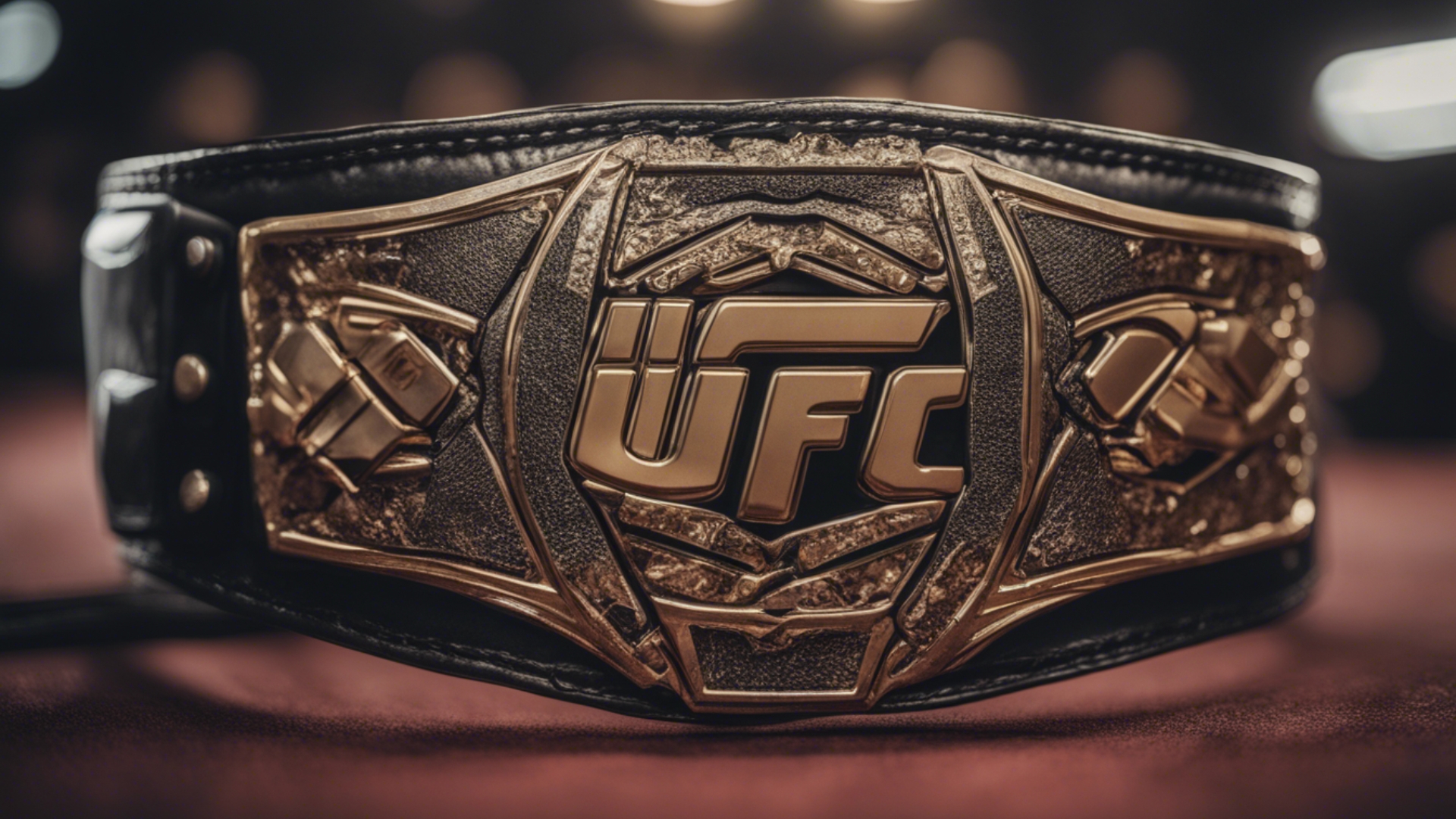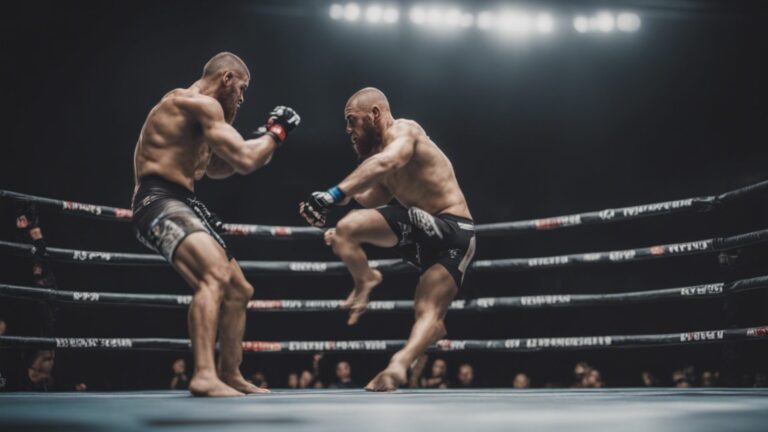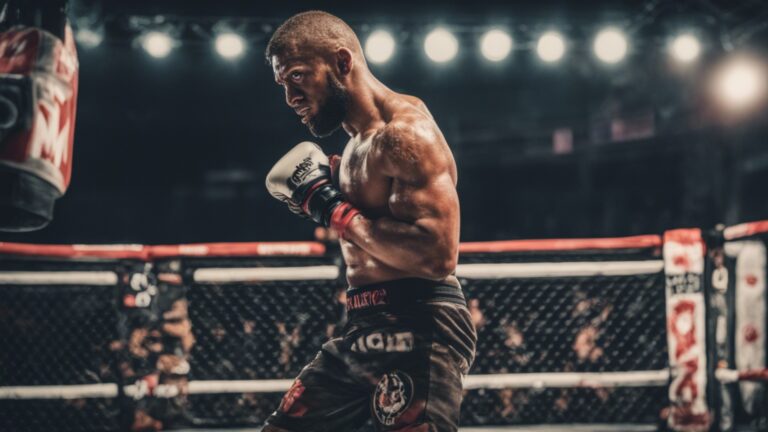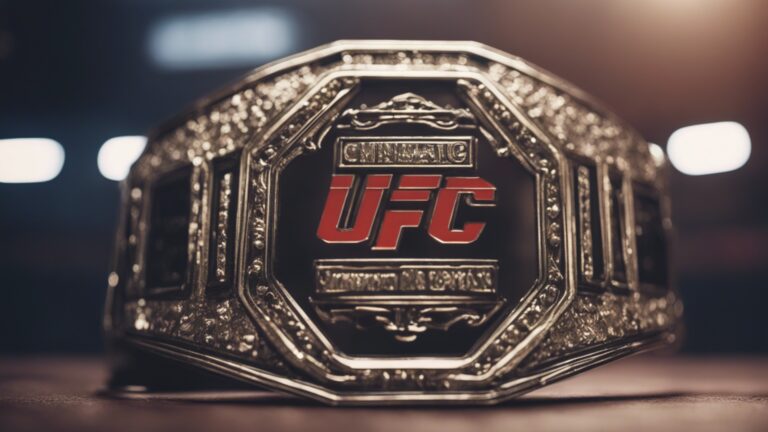
In this article:
The UFC belt signifies the championship title within a specific weight class. Winners defend the title against contenders determined by UFC matchmaking.
UFC belts are the ultimate prize fighters that contend for various weight categories, from flyweight to heavyweight.
These iconic symbols of martial arts excellence are not just accessories but represent the pinnacle of achievement in the sport.
As champions carve their legacy, fans are drawn to the narratives of grit, technique, and peak physical prowess that these belts embody.
The UFC’s matchmakers play a crucial role in this dynamic, selecting top contenders to challenge for the belt and ensuring the sport remains competitive and engaging.
With each defense or transfer of the belt, new chapters unfold, maintaining the UFC’s reputation for delivering adrenaline-packed events to a global audience.
The championship belts are rewards and milestones that mark a fighter’s place in UFC history.
The Allure of the UFC Championship

The United Fighting Championship (UFC) is the pinnacle of mixed martial arts, where modern gladiators battle for the ultimate symbol of supremacy: the UFC title.
The championship belt not only represents the peak of achievement in this high-octane sport but also signals to fans and fighters alike its bearer’s extraordinary journey and skillset.
The allure of the UFC championship lies in its rich history, the honor it bestows upon the titleholder, and the raw excitement it generates among the eager audience.
Symbols of Martial Arts Prowess
Wearing the UFC belt shows the world you have reached the highest echelon of martial arts.
The belt signifies mastery across various fighting disciplines, ranging from Brazilian jiu-jitsu to Muay Thai, and validates its holder’s immense dedication and resilience.
Holding the UFC title is akin to holding a trophy that proclaims one’s expertise in combat, perseverance, and tactical intelligence.
Evolution of UFC Titles
Through the years, the UFC has seen transformations in recognizing champions. The evolution of UFC titles reflects the growth and sophistication of the league.
Initially simple and understated, the belts have become ornate emblems of valor, as detailed below:
| Year | Design Change |
|---|---|
| 1990s | Basic design with classic insignia |
| 2000s | Introduction of more intricate details |
| 2010s | UFC Legacy Belt with customizable side plates |
Newer belts allow champions to showcase their legacy, making each title a collective piece of UFC history and a unique narration of the victor’s story.
Tiers of UFC Titles
Welcome to the thrilling world of the UFC, where fighters dream of claiming the ultimate symbol of victory—the UFC Championship Belt.
Understanding how this prestigious accolade works takes us on a journey through the structured tiers of UFC titles.
Each tier represents a milestone of achievement in the fiercely competitive UFC arena.
Weight Class Distinctions
In the UFC, fighters compete in various weight divisions. Weight class distinctions ensure fair and balanced matches. Here’s a breakdown:
- Flyweight: up to 125 lbs.
- Bantamweight: 126 – 135 lbs.
- Featherweight: 136 – 145 lbs.
- Lightweight: 146 – 155 lbs.
- Welterweight: 156 – 170 lbs.
- Middleweight: 171 – 185 lbs.
- Light Heavyweight: 186 – 205 lbs.
- Heavyweight: 206 – 265 lbs.
Each weight class has its champion. Champions defend their belts against top contenders.
Interim Belts and Their Purpose
At times, champions may be unable to defend their title. The UFC then introduces an interim belt.
The purpose of this belt:
- Maintain activity: Keeps the division moving forward.
- Guarantee fights: Ensures top contenders stay engaged.
- Prepare champions: Set up unification bouts for when champions return.
An interim champion may eventually face the returning champion, unifying the belts and deciding the undisputed champion of the weight class.
Pathway to the Title Shot
Within the thrilling world of the Ultimate Fighting Championship (UFC), the fighters contend for the most coveted prize: the UFC belt.
Grasping the Pathway to the Title Shot demands understanding the unique dynamic that governs opportunities within the Octagon. Let’s delve into a fighter’s journey to secure a championship fight.
Fighter Rankings Considerations
The UFC rankings are a key factor in determining a fighter’s shot at the title. These rankings are updated post-event, reflecting wins, losses, and overall performance.
Fighters work tirelessly to climb these rankings, knowing that a higher placement could mean a closer step to championship glory.
- Performance: Outstanding victories push fighters up the ladder.
- Activity: Frequent bouts show dedication and resilience.
- Opponents: Defeating ranked adversaries garners more attention.
Earning a Championship Fight
Securing a championship bout is not solely about rank. Fighters must catch the eye of fans and the promotion through memorable fights and personal charisma.
Staying active and victorious is paramount, but so is building a brand that cannot be ignored.
| Criteria | Details |
|---|---|
| Win Streak | Consecutive victories build momentum. |
| Finishes | Knockouts and submissions make a statement. |
| Marketability | A fighter’s ability to engage fans influences opportunities. |
The road to UFC gold is fraught with challenges, but fighters pave their way to a title shot by mastering the art of the fight and capturing the public’s imagination. It combines skill, determination, and strategy—inside and outside the Octagon.
The Championship Bout
When fighters enter the Octagon for a UFC championship match, they enter a world of prestige and honor.
This is the moment when legends are born and champions are crowned. The UFC gold belt symbolizes the pinnacle of mixed martial arts achievement, so let’s dive into what happens during these high-stakes title fights.
Rules and Regulations
Each championship bout follows strict guidelines. Here’s what sets them apart:
- Five-Round Fights: Unlike regular matches, title fights last for five rounds, pushing fighters’ limits.
- Weight Classes: Fighters must weigh within their division’s limit, ensuring fair competition.
- Fighters’ Safety: A dedicated team of referees and medical staff enforces rules to protect athletes.
Determining the Victor
Winning the UFC belt is every fighter’s dream. Here’s how a new champion emerges:
- Scoring: Judges award points for effective striking, grappling, aggression, and octagon control.
- Knockout or Submission: A fight can end instantly if one fighter knocks out the other or forces them to submit.
- Decision Victory: The judges’ scores decide the winner if the bout lasts all five rounds.
Should the champion retain their title or a new champion emerge, the belt is a tangible testament to their skill, heart, and dedication inside the UFC Octagon.
Defending the UFC Belt
Defending the UFC Belt is a crowning achievement for mixed martial artists. Once a fighter claims the title, they enter a new arena of challenge: maintaining their spot at the peak.
Champions must defend their belt against contenders to prove their ongoing dominance. This process isn’t just about the physical fight; it carries significant strategic and promotional implications for the fighters involved.
Champion’s Privileges
Winning a UFC belt bestows more than just a shiny trophy; it offers unique advantages. Champions gain negotiation leverage, often dictating fight terms and purses.
They also grab a bigger slice of pay-per-view revenue, a lucrative perk. This system incentivizes fighters to keep the belt and promotes intense competition.
Mandatory and Voluntary Defenses
Title defenders typically face two types of opponents: mandatory and voluntary.
- The UFC sets mandatory challengers, often the top contenders in the division.
- Voluntary defenses allow champions some choice, often leading to strategic picks or fan-favorite matchups.
Champions must navigate these defenses while honing their skills and preparing for all comers. In the UFC, staying on top is as tough as getting there.
Legacy and Beyond
The UFC belt is not just a prize but a symbol of true martial arts mastery. Fighters dream of winning and holding it aloft, but what happens when those gladiators make history, retire, or leave a void?
That’s where “Legacy and Beyond” comes into play. It examines how champions cement their legacy and what occurs when the belt must find a new home.
Hall of Fame Inductions
When UFC fighters demonstrate extraordinary skill and career achievements, they may be inducted into the UFC Hall of Fame. This honor celebrates their legacy and impact on the sport.
Fighters across all divisions strive for this distinction to turn their dedication into immortal status. Hall of Fame inductions occur yearly, spotlighting those who’ve shaped UFC history.
Title Vacancies and Retirements
A vacant UFC title sets the stage for fresh drama. When a champion retires or leaves the division, a title may go unclaimed.
Things get exciting here: top contenders face off for the belt’s inheritance, injecting the division with new energy. This cycle allows new stars to emerge and keeps the thrill of the sport alive.
Frequently Asked Questions
How Does the New UFC Belt Work?
The new UFC belt designates its holder as the current champion in their weight class. Champions receive a new ruby to mark each title defense.
This system replaced the old belts, creating a legacy that champions build on visually through their successful defenses.
How Do You Win a UFC Belt?
To win a UFC belt, a fighter must compete in matches, earn a title shot, and defeat the current champion in their weight class.
Does the UFC Let You Keep the Belt?
Yes, UFC champions keep their title belt after winning a fight. New belts are awarded for each title defense or victory.
Can You Hold 2 UFC belts At the Same Time?
Yes, fighters can simultaneously hold two UFC belts in different weight classes, known as being a “double champion. “
What is the UFC Championship Belt?
The UFC championship belt is a prestigious award given to fighters who win their respective weight class division within the Ultimate Fighting Championship.
How Do Fighters Earn a UFC Belt?
Fighters earn a UFC belt by winning championship bouts, typically scheduled against the current champion or top contenders in their weight class.
Can UFC Champions Hold Multiple Belts?
Yes, UFC champions can hold belts in multiple weight classes, known as “double champs,” but must actively defend titles in each division.
What Happens to the Belt When a Champion Loses?
When a champion loses, the UFC belt is transferred to the victorious contender, crowning a new champion in that weight class.
How Often Must UFC Champions Defend Their Belt?
UFC champions are expected to defend their belt regularly, usually at least once a year, depending on activity level and competition availability.
Are Interim UFC Belts Different?
Interim UFC belts are temporarily awarded when a reigning champion cannot compete due to reasons like injury, creating a placeholder champion until a unification bout can occur.
Conclusion
Understanding UFC belts is key to appreciating the sport’s structure and prestige. Champions earn their status through skill and perseverance.
As fans, the belt’s significance lies in the stories, triumphs, and challenges it symbolizes. Keep following for more insights on the ever-evolving UFC landscape.






